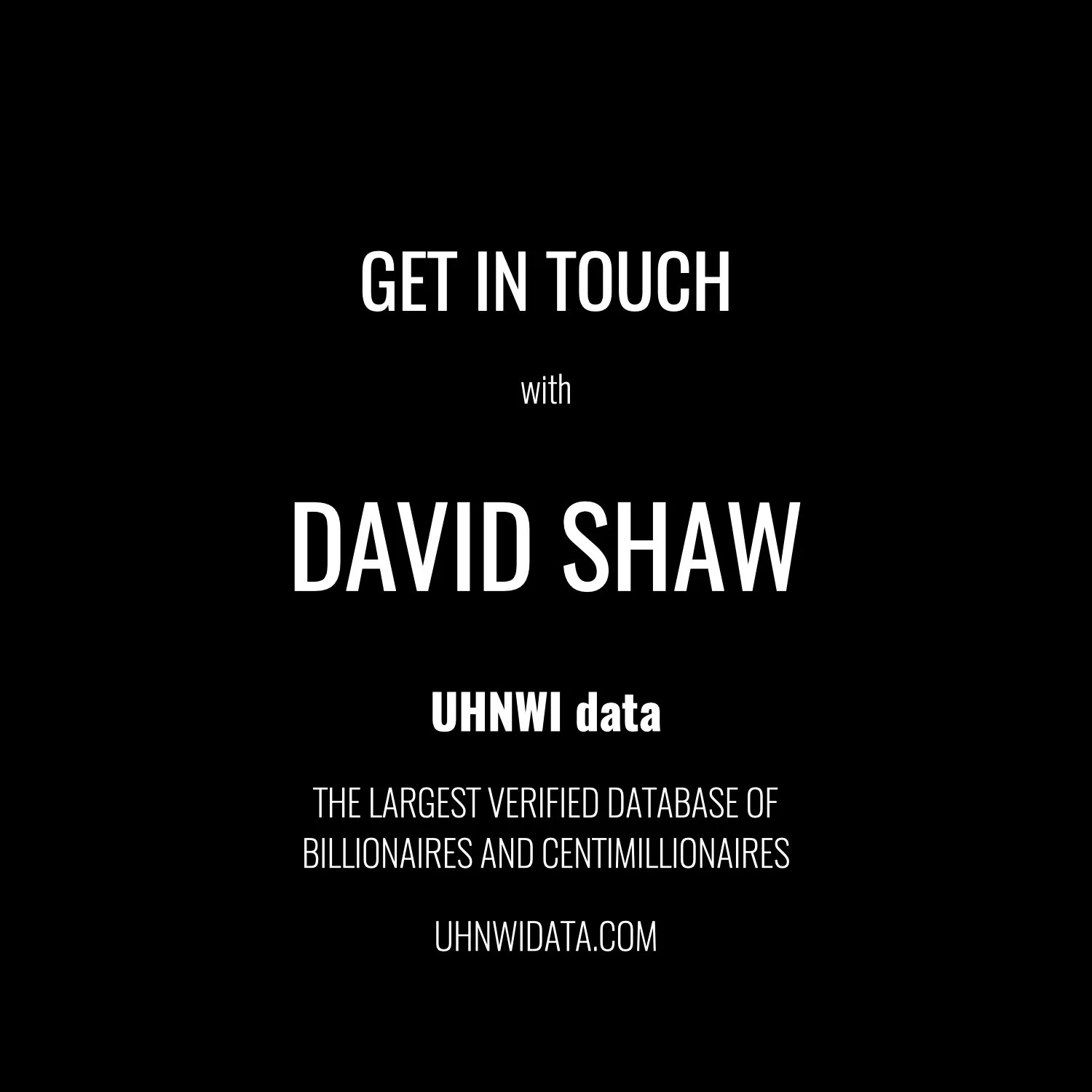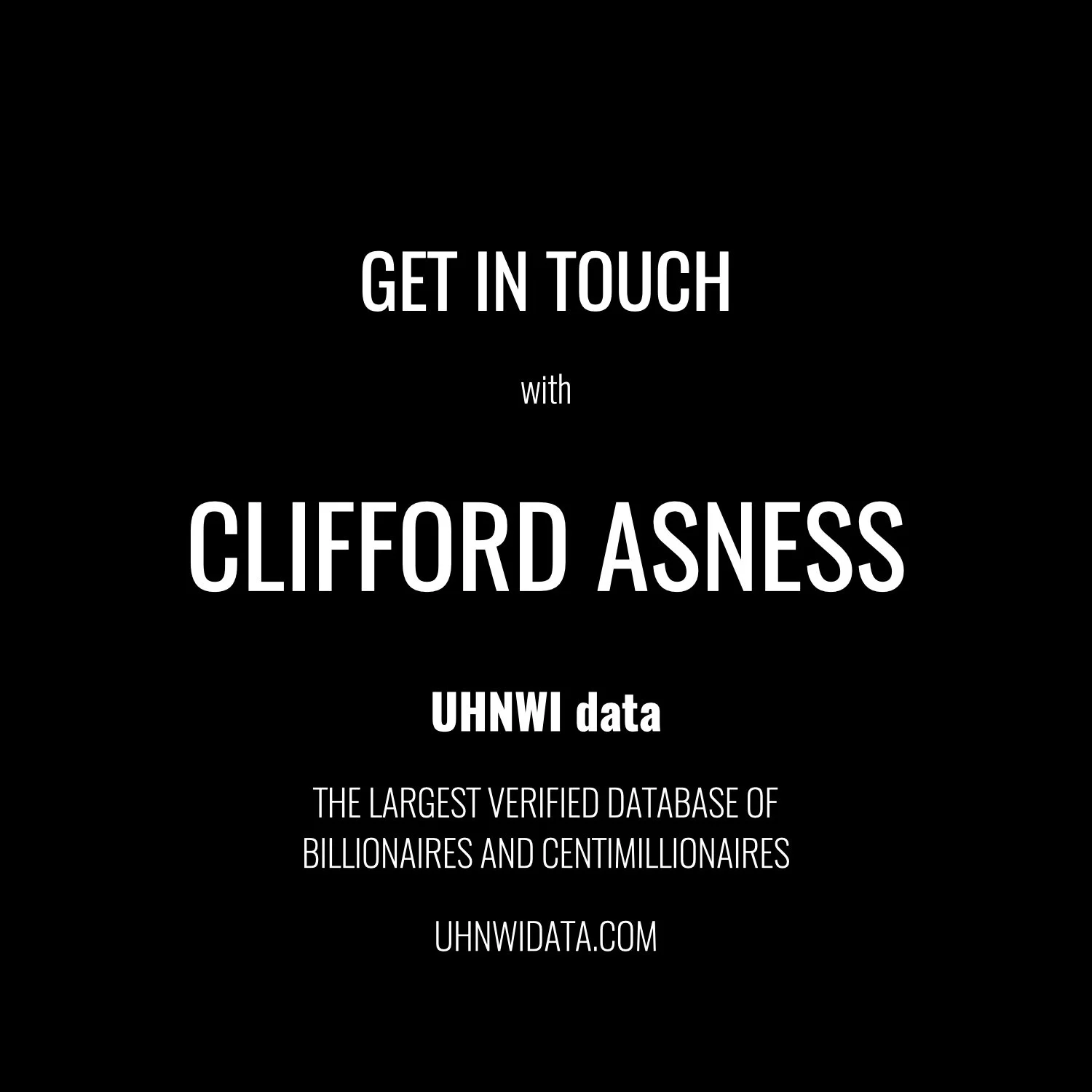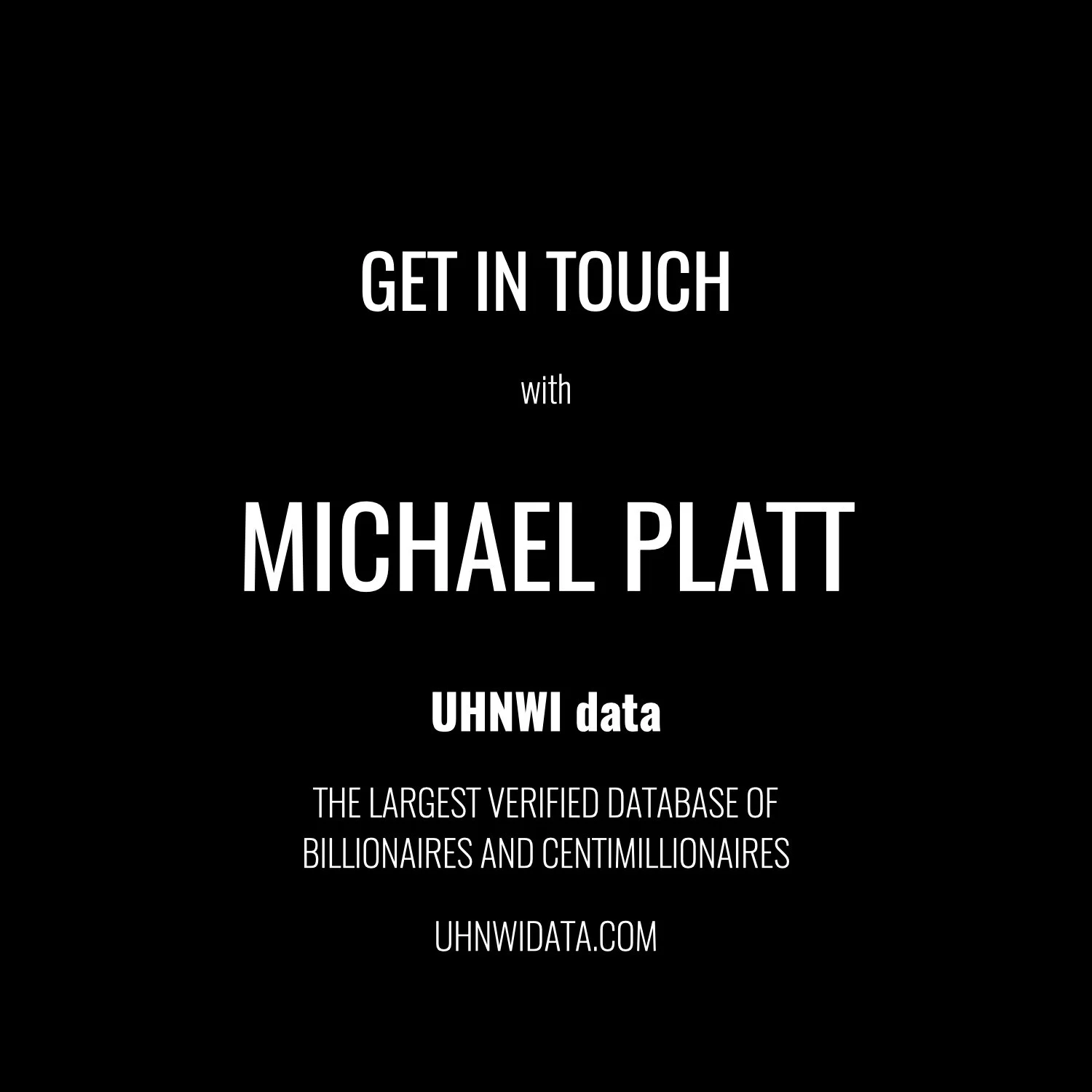AQR Capital Management (AQR) is a global investment management firm headquartered in Greenwich, Connecticut, that specializes in quantitative and systematic investment strategies across alternative and traditional asset classes.[1] Founded in 1998 by Cliff Asness, David Kabiller, Robert Krail, and John Liew in New York City, the firm initially launched with a hedge fund product and has since grown into a major player in data-driven finance, managing approximately $166 billion in assets under management as of October 2025.[1][2]
AQR's investment philosophy centers on the integration of economics, behavioral finance, alternative data, and advanced technology to identify and exploit market inefficiencies, drawing heavily from academic research and empirical evidence.[1] The firm offers a diverse range of products, including long-short equity strategies, multi-strategy funds, mutual funds, and ESG-integrated solutions, serving institutional and individual clients worldwide.[3] With over 600 employees, AQR maintains a global footprint through offices in the United States, London, Munich, Hong Kong, Bengaluru, Sydney, and Dubai, emphasizing rigorous research and intellectual curiosity to challenge conventional investment norms.[4][1]
Notable for its quantitative rigor, AQR has navigated market cycles with strategies that incorporate factors such as value, momentum, and quality, while adapting to evolving trends like sustainable investing—where about 80% of its assets incorporate ESG-related signals as of 2024.[5] The firm's founders, all with backgrounds in finance and academia, including Asness's PhD from the University of Chicago, have positioned AQR at the forefront of applied quantitative research in asset management.[6]
Overview
Founding and Mission
AQR Capital Management was founded in August 1998 in New York City by Clifford S. Asness, David G. Kabiller, John M. Liew, and Robert J. Krail.[7] These founders, drawing from their prior experience at Goldman Sachs, established the firm to pioneer systematic investment approaches grounded in empirical research.[8]
The original mission of AQR was to apply rigorous academic research and quantitative methods to investment management, thereby bridging the gap between financial theory and practical application in alternative and traditional investments.[7] This purpose emphasized delivering superior, risk-adjusted returns through innovative, research-driven strategies that challenged conventional market efficiency assumptions and integrated behavioral finance insights.[1] By focusing on data-driven analysis over subjective judgment, AQR aimed to identify and harvest persistent return premia, such as value and momentum, while prioritizing diversification and risk management.[7]
From its inception, AQR's initial focus centered on hedge fund strategies that employed systematic, quantitative techniques to exploit market inefficiencies, particularly in equities.[1] The firm launched its flagship Absolute Return fund on August 3, 1998, specializing in quantitative equity approaches that blended long and short positions based on factor models.[7]
This early venture was seeded with capital from Goldman Sachs, leveraging the founders' proven research track record, and quickly garnered substantial investor interest during a period of market turbulence, including the Russian debt crisis.[7] AQR accepted $1 billion from nearly $2 billion in subscriptions, marking one of the largest hedge fund debuts at the time and underscoring the appeal of its disciplined, evidence-based methodology.[7]
Organizational Structure and Global Presence
AQR Capital Management is headquartered in Greenwich, Connecticut, at One Greenwich Plaza, Suite 130.[1] The firm maintains a global presence with additional offices in London and Munich in Europe, Sydney in Australia, Hong Kong and Bengaluru in Asia, and Dubai in the Middle East, established in subsequent years to support international operations.[1]
The organization's structure is organized around key functional departments, including Research, which encompasses teams focused on global alternative premia, asset allocation, and stock selection; Portfolio Implementation, responsible for constructing and optimizing portfolios; Business Development, which handles client relations; and supporting areas such as Trading, Risk Management, Engineering, and Portfolio Finance.[9] This framework enables integrated operations across investment research, execution, and client servicing.
As of 2025, AQR employs approximately 821 people worldwide.[10] With a particular emphasis among researchers where about 65% possess advanced degrees and around 30 hold PhDs.[11]
AQR primarily serves institutional investors, such as pension funds, defined contribution plans, insurance companies, endowments, foundations, and sovereign wealth funds.[12] It offers investment products including mutual funds, UCITS funds, sponsored funds, and separate managed accounts tailored to client needs.[13]
The firm is registered as an investment adviser with the U.S. Securities and Exchange Commission (SEC) since May 1998.[14] AQR operates global subsidiaries, such as AQR Capital Management (Europe) LLP, to ensure compliance with local regulatory requirements in various jurisdictions.[1]
Investment Philosophy
Core Principles
AQR Capital Management's investment philosophy is anchored in three core principles derived from extensive empirical research in finance. First, the firm emphasizes diversification across multiple factors and asset classes to effectively manage risk, recognizing that no single investment approach can consistently outperform in all market conditions. This principle is supported by decades of analysis showing that broad exposure reduces volatility without sacrificing expected returns. Second, AQR advocates for systematic implementation, leveraging data-driven models and algorithms to execute investment decisions in a repeatable, unbiased manner, thereby minimizing human error and emotional interference. Third, the firm maintains a long-term focus on persistent factors such as value, momentum, and quality, while explicitly rejecting market timing attempts, as historical evidence indicates that factors deliver premia over extended horizons rather than short-term predictions.[12]
A key element of AQR's approach is risk parity, which involves allocating capital based on each asset's contribution to overall portfolio risk, rather than equal dollar amounts, to achieve more balanced exposure and improved risk-adjusted outcomes. This method counters the traditional bias toward equities in conventional portfolios, where stocks often dominate risk due to their higher volatility. By equalizing risk contributions across equities, bonds, and alternatives, risk parity aims to create portfolios that perform more steadily across economic regimes.[15]
AQR integrates insights from behavioral finance to capitalize on market inefficiencies arising from investor psychology, such as overreaction to news or herding behavior, which lead to temporary mispricings exploitable through systematic strategies. The firm views these anomalies as opportunities to generate alpha, grounded in the understanding that rational models alone cannot fully explain persistent deviations from efficiency. Additionally, tax-aware investing forms a foundational principle, with strategies engineered to minimize tax liabilities—such as through loss harvesting and position sizing—for taxable clients, potentially enhancing after-tax returns by several percentage points over time.[1][7][16]
Quantitative Research Foundations
AQR Capital Management's quantitative research is grounded in extensive reliance on large-scale historical financial datasets, spanning global equities, bonds, fixed income, and alternative assets dating back to the 1950s and earlier in some cases. For equities, this includes U.S. stock data from 1951 onward for factor construction, supplemented by international markets and commodities with records extending to the 1920s for trend and momentum analysis. The firm also develops proprietary datasets, such as the quality-minus-junk (QMJ) factor, which aggregates metrics on profitability, growth, and safety from corporate financial statements to identify high-quality stocks. These datasets enable rigorous empirical testing across asset classes, ensuring models capture diverse market conditions while incorporating macroeconomic variables like inflation and interest rates.[17][18]
Central to AQR's approach is a factor investing framework that systematically tilts portfolios toward persistent drivers of returns, including value, momentum, profitability/quality, and low-risk factors. The value factor targets undervalued securities, defined by low price-to-book ratios or earnings yields, capturing the tendency for cheap assets to outperform over time. Momentum emphasizes recent performance winners, selecting stocks with strong past 12-month returns excluding the most recent month to exploit price continuation. Profitability/quality, exemplified by the proprietary QMJ factor, favors firms with high gross margins, low debt, and stable earnings growth, delivering risk-adjusted premiums by avoiding "junk" stocks with poor fundamentals. The low-risk factor, often implemented via betting-against-beta strategies, prioritizes assets with stable returns and low volatility, rewarding those that generate consistent outcomes relative to their risk exposure. These factors are integrated to enhance diversification beyond traditional asset classes.[19][20][17][21]
AQR employs multi-factor regression models to estimate expected returns, regressing asset performance against these factors to quantify exposures and forecast premiums while controlling for market beta and other risks. These models draw on cross-sectional and time-series regressions to isolate factor contributions, using techniques like ordinary least squares to assess statistical significance and economic magnitude. To mitigate overfitting, strategies undergo rigorous backtesting on in-sample data followed by out-of-sample validation on unseen periods, ensuring robustness across market regimes such as the 2008 financial crisis or post-2020 recovery. This process incorporates transaction costs and liquidity constraints derived from historical trading data, prioritizing models that maintain predictive power beyond initial fitting.[22][23][24][25]
Innovations in forming long-run return expectations at AQR blend economic theory with historical simulations, using "anchors" like the equity risk premium derived from dividend yields and growth models to project multi-decade horizons. Theoretical foundations, such as consumption-based asset pricing, inform baseline premia adjusted for current valuations via regressions on macroeconomic variables like GDP growth and inflation. Historical simulations bootstrap past return distributions to stress-test forecasts, revealing that high valuations compress future returns while mean reversion supports elevated premia in undervalued regimes. This methodology evolves traditional capital market assumptions by weighting theory (e.g., risk aversion parameters) alongside empirical evidence, providing a disciplined alternative to purely survey-based or backward-looking estimates.[26][27][28]
Strategies and Products
Equity and Factor-Based Strategies
AQR Capital Management's equity and factor-based strategies emphasize systematic investment processes that target persistent drivers of stock returns, such as value, momentum, quality, and low volatility. These approaches seek to outperform traditional market-cap-weighted indices by tilting portfolios toward securities exhibiting favorable factor characteristics, while incorporating risk management techniques to mitigate drawdowns. Long-only funds provide direct exposure to equity markets with factor enhancements, whereas long-short strategies aim to generate alpha independent of broad market movements through paired long and short positions.[29][30]
Among its long-only offerings, the AQR Large Cap Momentum Style Fund focuses on large-cap U.S. equities selected for positive momentum signals, including recent price performance, earnings surprises, and residual stock returns, with at least 80% of assets invested in such securities under normal conditions.[31] In the long-short category, the Delphi Long-Short Equity Strategy employs a multi-factor model to identify attractive long positions in undervalued or high-momentum stocks and short positions in those expected to lag, maintaining moderate net equity exposure; as of October 2025, it manages approximately $4.6 billion in assets.[32][2][33] These strategies exemplify AQR's commitment to factor-driven equity investing, balancing potential upside with controlled market beta.
AQR incorporates factor timing and blending to enhance returns and reduce volatility, dynamically adjusting allocations based on factor valuations, momentum trends, and economic indicators, while combining multiple factors—such as overweighting high-momentum or value stocks—into diversified portfolios to capture complementary premia.[34][35] This systematic overweighting deviates from passive indexing, aiming to exploit time-varying factor performance without relying on discretionary stock picking.[29]
The firm's equity strategies provide comprehensive global coverage, spanning U.S. markets, developed international equities, and emerging markets to offer geographic diversification and access to region-specific factor opportunities.[36][37] In select mandates, AQR integrates environmental, social, and governance (ESG) factors into the factor models and stock selection processes, aligning investment decisions with sustainability objectives without compromising return potential.[38]
In June 2025, AQR launched the Fusion Mutual Fund Series to deliver multi-factor equity exposure, including the AQR LSE Fusion Fund, which fuses long-short equity positions with additional systematic overlays for enhanced diversification and risk-adjusted returns.[39] This series builds on AQR's core factor framework by blending equity tilts with complementary strategies, targeting investors seeking integrated solutions for volatile markets. Through late 2025, AQR's multi-strategy equity offerings, including the Fusion series, have demonstrated resilience amid market volatility.[40][41]
Alternative and Multi-Strategy Offerings
AQR Capital Management offers a range of multi-strategy funds designed to provide diversified, absolute returns through exposure to multiple alternative investment styles across various asset classes. The AQR Style Premia Alternative Fund, for instance, invests long and short in global equities, fixed income, currencies, and commodities to capture premia associated with value, momentum, carry, and defensive factors, aiming for low correlation to traditional markets and positive absolute returns.[42] Similarly, the AQR Apex Strategy employs a dynamic multi-strategy approach, leveraging innovative research to allocate across liquid alternative sources such as trend-following, relative value, and event-driven opportunities, with the goal of maximizing risk-adjusted returns while enhancing portfolio diversification.[12] These funds blend systematic processes to harvest returns from non-traditional sources, building on AQR's quantitative foundations in factor investing applied to alternatives.[43]
In the realm of market-neutral and absolute return strategies, AQR provides offerings that seek to generate returns independent of broader market directions through long-short positions across asset classes. The firm's managed futures strategies, such as the AQR Managed Futures Strategy Fund, invest in liquid futures contracts on global equities, fixed income, currencies, and commodities to capture persistent trends using systematic models.[44] Complementing this, global macro strategies take top-down positions based on economic and political trends across international markets, often employing both long and short exposures to profit from macroeconomic shifts.[45] Additionally, event-driven approaches include convertible and merger arbitrage, focusing on opportunities arising from corporate events like mergers or convertible bond issuances, alongside relative value trades to maintain market neutrality.[12] These strategies collectively aim to deliver absolute returns with reduced volatility and correlation to equities.
AQR's diversifying strategies further emphasize broad exposure to alternative risk premia to mitigate portfolio drawdowns. The AQR Diversifying Strategies Fund allocates across six underlying AQR alternative mutual funds, incorporating tactical adjustments to enhance returns while providing multiple independent return streams for dampening losses during market stress.[46] This fund received the "Alternative Risk Premia" award at the 2023 With Intelligence HFM US Performance Awards, recognizing its role in delivering diversified outcomes.[47]
For institutional clients, AQR offers alternative products centered on risk parity and tail-risk hedging, developed in response to the 2009 financial crisis to address systemic vulnerabilities. Risk parity portfolios, as outlined in AQR's research, allocate capital equally by volatility across asset classes like equities, bonds, and commodities to achieve balanced risk contributions and improved diversification during crises.[48] Tail-risk hedging strategies employ options and trend-following overlays to limit downside exposure in extreme market events, enabling investors to maintain core positions without forced selling.[49] These offerings prioritize liquid instruments and systematic implementation to provide reliable protection against tail events.
History
Early Development (1998–2008)
AQR Capital Management was established in August 1998 as a spin-off from the Quantitative Research Group at Goldman Sachs Asset Management, where its founders—Cliff Asness, David Kabiller, Robert Krail, and John Liew—had developed systematic investment strategies. The firm launched with approximately $1 billion in assets under management (AUM), primarily from Goldman Sachs' proprietary capital and early institutional investors, focusing initially on quantitative equity hedge funds that applied factor-based approaches such as value and momentum. This marked one of the largest hedge fund launches of its time, emphasizing rigorous, data-driven models to exploit market inefficiencies.[7][1][50]
Between 2001 and 2004, AQR experienced rapid growth, reaching $12 billion in AUM by September 2004, evenly split between hedge funds and long-only products. This expansion was fueled by strong performance in equity strategies and the introduction of international offerings, extending factor models to non-U.S. markets to capture global opportunities. A key milestone was the relocation of the firm's headquarters to Greenwich, Connecticut, in 2004. To bolster its research capabilities, AQR began hiring PhD-level researchers, including figures like Tobias Moskowitz and Lasse Heje Pedersen, to develop proprietary models integrating academic insights with practical implementation.[1][7][51]
From 2005 to 2008, AQR diversified beyond equities into fixed income and commodities, launching strategies that applied value and momentum factors to bonds, currencies, and commodity futures to enhance portfolio resilience. AUM peaked at about $39 billion in mid-2007 before declining to approximately $24 billion by year-end 2008 amid the financial crisis.[52][53] However, the firm encountered challenges during the August 2007 quantitative crisis, a market-wide event triggered by deleveraging and liquidity strains that caused temporary drawdowns across many quant funds, including AQR's equity strategies. AQR recovered through its emphasis on factor diversification, which mitigated losses relative to peers, and by maintaining discipline in its systematic approach amid wider value spreads that signaled future opportunities.[7][54]
Expansion and Challenges (2009–Present)
In the aftermath of the 2008 financial crisis, which halved AQR Capital Management's assets under management to approximately $17 billion by early 2009, the firm pivoted toward broader client accessibility by launching its first mutual funds.[55][56] This move, initiated in January 2009 with the AQR Diversified Arbitrage Fund, positioned AQR as one of the pioneers in offering hedge fund-like alternative strategies to retail investors through registered mutual funds, distributed primarily via financial advisers.[57][58] The strategy reflected a deliberate shift from institutional-only focus to democratizing quantitative investing amid regulatory changes and investor demand for liquid alternatives post-crisis.[56]
Throughout the 2010s, AQR pursued global expansion to tap into international markets, opening its first European office in London in 2011, a Hong Kong office in 2016 to serve the Asia-Pacific region and establishing an engineering center in Bengaluru, India, in 2018 to bolster research capabilities.[1][59] This period marked significant growth, with total assets under management peaking at $226 billion prior to the late-decade challenges, driven by inflows into mutual funds that exceeded $40 billion globally by 2018.[60] However, the firm encountered substantial outflows during the 2020 COVID-19-induced quant stress, as factor-based strategies faltered amid market volatility, reducing AUM to around $95 billion by 2022.[61][2]
From 2020 to 2024, AQR navigated a prolonged "quant winter" spanning 2018 to 2020—the third such crisis in its history after 2007—characterized by underperformance in value and momentum factors due to growth stock dominance and pandemic disruptions, leading to workforce reductions and persistent redemptions.[60][62] Recovery accelerated in 2021 through diversified style premia and multi-strategy offerings, which rebounded as market rotations favored cyclical factors, stabilizing AUM at $114 billion by the end of 2024.[62][2] These approaches emphasized low-correlation alternatives to mitigate drawdowns, aligning with AQR's core quantitative framework during turbulent periods.
By 2025, AQR experienced robust inflows, adding nearly $20 billion in the first half alone, propelled by strong hedge fund performances exceeding 10% returns in several strategies amid volatile markets.[63][32] The firm further expanded its product lineup with the June 2025 launch of the AQR Fusion series—four mutual funds blending U.S. equity exposure (e.g., S&P 500) with long-short alternative strategies and tax-aware implementation—to attract taxable investors seeking portable alpha.[64][47] This innovation built on prior multi-strategy successes, enhancing diversification in an era of heightened market uncertainty.
Performance and Assets
Assets Under Management
AQR Capital Management's assets under management (AUM) have experienced substantial growth and fluctuations since the firm's early years. By 2004, the firm had surpassed $12 billion in AUM across both hedge funds and long-only products. This marked a significant expansion from its initial operations following its founding in 1998.[1]
The firm's AUM peaked at approximately $226 billion in 2018, reflecting robust inflows into its quantitative strategies during a period of favorable market conditions for factor-based investing. However, subsequent challenges in the quant space led to a decline, with AUM dipping to $95 billion by the end of 2022. Recovery began in the following years, reaching $99 billion at the end of 2023 and climbing to $114 billion by the end of 2024.[60][2]
As of May 2025, AQR's total AUM stood at $160.5 billion. The firm's 13F-reported portfolio value grew to $121 billion in the second quarter of 2025, up from approximately $97 billion in the prior quarter and reflecting ongoing expansion from the $99 billion level at the end of 2023. By October 2025, total AUM was reported at around $165 billion.[4][65][66][2]
AQR's AUM is distributed across a mix of hedge funds, mutual funds and ETFs, and institutional separate accounts. A notable portion involves tax-aware strategies designed for taxable investors, amounting to $45.3 billion as of September 30, 2025. Contributions from equity factor-based and multi-strategy offerings have been key to recent AUM composition.[16]
Growth in 2025 has been driven by strong inflows, with the firm adding nearly $20 billion in the first half of the year, largely attributable to performance in multi-strategy funds amid volatile markets. This influx supported a rebound in overall AUM trends following earlier post-peak contractions.[63]
Key Performance Highlights
AQR's mutual funds have demonstrated strong risk-adjusted performance since inception, achieving an average Sharpe ratio of 1.0 across the portfolio, attributed to effective factor diversification that mitigates volatility while capturing premia.[56]
The firm's core strategies have delivered long-term annualized net returns of approximately 8–12%, with notable resilience during quantitative crises, including the 2007 episode and subsequent market stresses, where drawdowns remained below 20% for flagship funds.[60]
In 2025 year-to-date through October, AQR's multi-strategy fund recorded a return of +15.6%, the Delphi Long-Short Equity Strategy achieved +14.3%, and the Adaptive strategy posted +17.5%, with several funds outperforming the S&P 500's first-half gains amid volatile markets.[66][2][32]
AQR received the HFM US Performance Award for Diversifying Strategies in 2023, recognizing superior returns in alternative risk premia approaches.[67] Additionally, in 2025, the firm earned an Outstanding Article recognition in the 26th Annual Bernstein Fabozzi/Jacobs Levy Awards for its research paper "The Less Efficient Market Hypothesis," highlighting contributions to portfolio theory and performance insights.[68]
Leadership and Personnel
Founders
AQR Capital Management was co-founded in 1998 by four professionals with deep roots in quantitative finance: Cliff Asness, David Kabiller, John Liew, and Robert Krail.[1] All four had previously collaborated at Goldman Sachs, where they developed quantitative strategies for the firm's asset management division, providing the foundational expertise that propelled AQR's launch as a hedge fund focused on systematic, research-driven investing.[69] Their combined academic and practical backgrounds in finance and risk analysis were instrumental in establishing AQR's emphasis on empirical, factor-based approaches from the outset.
Cliff Asness serves as Managing Principal and Chief Investment Officer of AQR, roles he has held since the firm's inception. He earned an MBA with high honors in 1991 and a PhD in finance in 1994 from the University of Chicago Booth School of Business, where he studied under Nobel laureate Eugene Fama and served as his teaching assistant.[6] Prior to founding AQR, Asness was a Managing Director and Director of Quantitative Research at Goldman Sachs Asset Management, where he pioneered quantitative models for equity and fixed-income strategies.[70] Asness is widely recognized for his advocacy of value investing, authoring influential papers such as "Fact, Fiction, and Value Investing," which defends the persistence of value factors amid market skepticism.[71] His vision shaped AQR's early commitment to rigorous, data-backed investment processes over discretionary decision-making.
David Kabiller is a co-founder and Head of Business Development at AQR, focusing on client relationships, strategic growth, and institutional partnerships. He holds a BA in economics and an MBA from Northwestern University's Kellogg School of Management, earned in 1985 and 1987, respectively, where he played tennis on an athletic scholarship.[72] Before AQR, Kabiller worked as a Vice President at Goldman Sachs, contributing to the development of quantitative hedge fund products. His expertise in client-facing strategies was pivotal in AQR's initial expansion, helping secure seed capital and build a foundation for long-term investor trust through transparent, systematic offerings.
John Liew is a co-founder and member of AQR's Executive Committee, overseeing research, portfolio management, and trading initiatives. He received a BA in 1989, an MBA in 1994, and a PhD in finance in 1995 from the University of Chicago Booth School of Business.[73] At Goldman Sachs prior to AQR, Liew specialized in derivatives pricing and risk management, co-authoring early research on hedge fund hedging practices, such as the paper "Do Hedge Funds Hedge?" which analyzed return volatility and risk exposures in alternative investments.[74] Liew's technical proficiency in derivatives and risk modeling influenced AQR's early adoption of multi-asset strategies that balanced equities, fixed income, and alternatives to optimize risk-adjusted returns.
Robert Krail is a co-founder and Founding Principal at AQR. Like Asness and Liew, he earned a PhD in finance from the University of Chicago, where the trio first collaborated on quantitative research during their doctoral studies.[75] Krail's pre-AQR career at Goldman Sachs involved quantitative trading and strategy implementation in the asset management group, honing skills in executing complex, data-driven trades.[69] His operational acumen helped establish AQR's robust infrastructure for scaling quantitative models from theoretical research into practical, high-volume trading systems in the firm's formative years.
Current Executive Team
Cliff Asness serves as the Chief Investment Officer and Managing Principal at AQR Capital Management, a role he has held since the firm's founding in 1998, where he oversees investment strategies and research efforts.[6] John Liew, a co-founder, acts as a Founding Principal and leads the firm's research and portfolio management activities as a member of the Executive Committee.[76] David Kabiller, another co-founder, is the Head of Business Development, responsible for client relationships and strategic initiatives.[72]
Key non-founder executives include Michael Mendelson, a Principal and portfolio manager who oversees both equity and macro strategies with over 30 years of industry experience.[77] John B. Howard serves as a Principal, Co-Chief Operating Officer, and Head of U.S. Wealth, managing operational functions and wealth management distribution.[78] Pat Ryan is the Principal and Chief Financial Officer, handling all finance-related operations.[79] Other notable principals include Andrea Frazzini, Head of Global Stock Selection, and Jordan Brooks, Co-Head of the Macro Strategies Group.[80][81] The executive team is notably PhD-intensive, with many principals holding advanced degrees in finance, economics, or related fields from leading institutions, reflecting AQR's quantitative focus.[1]
AQR's governance structure emphasizes risk management, particularly in light of past quantitative market stresses, through dedicated committees such as the Enterprise Risk Committee, which monitors market, liquidity, and operational risks across the firm.[82] As a privately held firm, oversight is provided by its principals and executive committee, with independent input from finance experts on risk and compliance matters where applicable.[83] The founders remain actively involved in day-to-day leadership alongside these executives.
Academic Engagement
Institutional Ties
AQR Capital Management's institutional ties trace back to its origins at the University of Chicago Booth School of Business, where three of its founders—Cliff Asness, John Liew, and Robert Krail—met during the PhD program and studied under Nobel laureate Eugene Fama.[75][6] Asness served as Fama's teaching assistant for two years while earning his MBA with high honors in 1991 and PhD in finance in 1994, while Liew obtained his AB in 1989, MBA in 1994, and PhD in 1995 from the same institution.[6][84]
These connections have persisted through ongoing support for academic programs at the University of Chicago. In 2024, Asness and Liew donated $60 million to fund scholarships and enhance the Master of Finance program at Booth, underscoring AQR's commitment to graduate-level education in quantitative finance.[84][85] The firm's top professionals include many former PhD students and faculty from Booth, reflecting a deep-rooted affiliation.[7]
A key formal partnership is the AQR Asset Management Institute at London Business School, launched in 2015 as a 10-year collaboration to advance asset management research, education, and talent recruitment; the partnership has continued beyond its initial term as of 2025.[1][86] The institute hosts joint events such as the annual Insight Summit, which brings together academics, practitioners, and policymakers for discussions on investment topics, and supports guest lectures by AQR executives at various universities.[87][88]
AQR maintains a robust employee pipeline from academia, recruiting heavily from the academic job market for roles in research and portfolio management, with positions targeted at recent PhD graduates. As of 2018, over 50% of its employees held advanced degrees, including more than 70 PhDs, many sourced from leading programs such as the University of Chicago Booth School of Business, the Wharton School, and New York University.[89][90]
Executives at AQR hold advisory positions on academic and research boards, strengthening these institutional links. For instance, Asness serves on the governing board of the Courant Institute of Mathematical Finance at NYU and the editorial board of The Journal of Portfolio Management, as well as the advisory board of the Journal of Investment Management.[91][92] These roles facilitate knowledge exchange between industry and academia, occasionally informing AQR's research initiatives.
Research Contributions and Initiatives
AQR Capital Management has produced numerous peer-reviewed publications advancing the understanding of investment factors, with firm researchers contributing to over 100 papers cited thousands of times in academic literature.[93] A notable example is the 2023 paper "The Less Efficient Market Hypothesis" by Clifford Asness, which argues that market inefficiencies may be increasing due to factors like social media and low interest rates, earning the "Outstanding Article" recognition in the 26th Annual Bernstein Fabozzi/Jacobs Levy Awards in 2025.[94] Additionally, AQR annually updates white papers on capital market assumptions, providing estimates of medium-term expected returns for major asset classes; the 2025 edition incorporates recent economic data to forecast returns over 5- to 10-year horizons.[95]
The firm maintains the public AQR Data Library, offering freely accessible datasets that support empirical research in quantitative finance. Key resources include the AQR Momentum Indices, tracking time-series and cross-sectional momentum from 1956 to the present, and the Quality-Minus-Junk (QMJ) portfolios, which form long high-quality stocks and short low-quality ones, available for developed markets ex-US since 1990 and from 1956 for the U.S.[96] These datasets are updated monthly to reflect the latest market data, enabling academics and practitioners to replicate and extend factor-based studies.[17]
Internally, AQR supports research through dedicated programs that foster quantitative expertise among employees. The QUANTA Academy, established in the 2010s, delivers ongoing professional development via classes, seminars, and events on technical skills, leadership, and investment strategies, benefiting hundreds of staff annually.[97] Complementing this, the AQR Capital Management Research Associates program recruits PhD candidates and early-career researchers for full-time roles focused on portfolio management and proprietary strategy development, providing hands-on training in data analysis and model building.[89]
These efforts have significantly influenced the factor investing literature, with AQR's work on value, momentum, carry, and quality factors shaping both academic discourse and practical applications.[98] For instance, papers like "Quality Minus Junk" have demonstrated the risk-adjusted returns of quality strategies across markets, earning prestigious awards and citations that underscore their enduring impact.



























